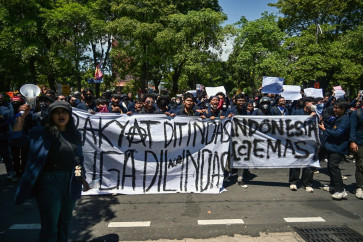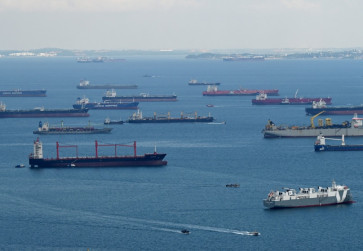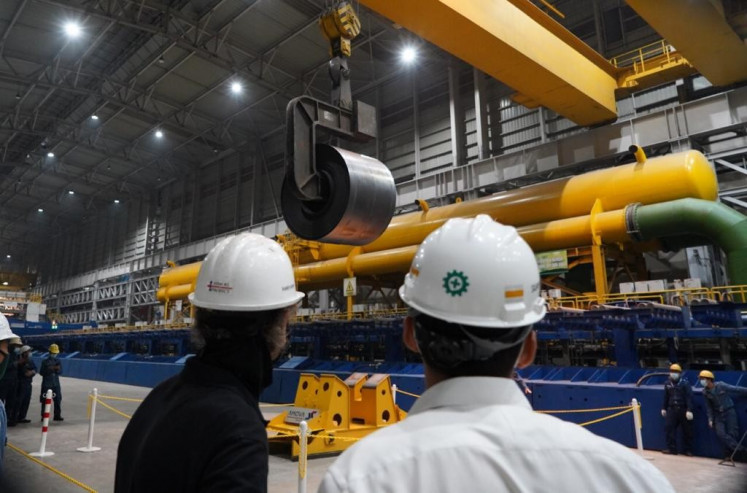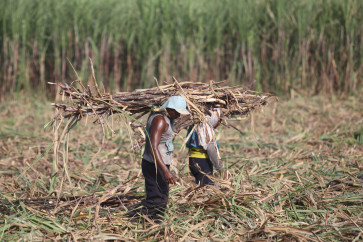Popular Reads
Top Results
Can't find what you're looking for?
View all search resultsPopular Reads
Top Results
Can't find what you're looking for?
View all search resultsIndonesia needs to quadruple sugar output by 2030 for self-sufficiency, ethanol
Indonesia's sugar production must reach 9.7 million tonnes by 2030 to be self-sufficient, where currently the country only produces around 2.5 million tonnes.
Change text size
Gift Premium Articles
to Anyone
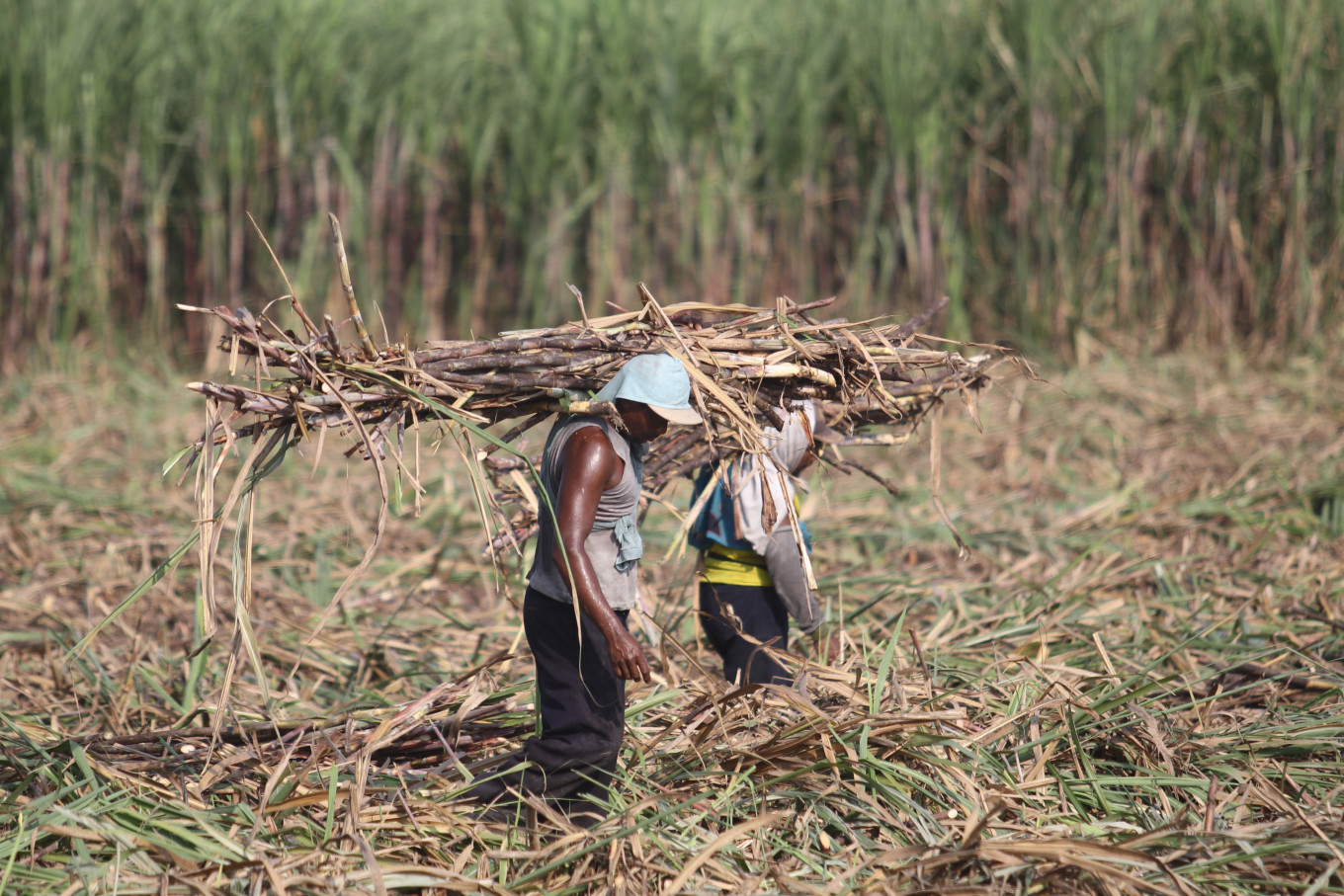 Workers carry sugarcane during a harvest day at Kewadungan Village in Kediri, East Java, on June 21, 2022. Five sugar factories, Tjoekir Jombang, Lestari Nganjuk, Meritjan Kediri, Modjopanggoong Tulungagung and Djombang Baru Jombang that are under state-owned plantation PT Perkebunan Nusantara (PTPN) X, have started their planting season with a target of grinding 111,000 tonnes of the crop. (Antara/Prasetia Fauzani)
Workers carry sugarcane during a harvest day at Kewadungan Village in Kediri, East Java, on June 21, 2022. Five sugar factories, Tjoekir Jombang, Lestari Nganjuk, Meritjan Kediri, Modjopanggoong Tulungagung and Djombang Baru Jombang that are under state-owned plantation PT Perkebunan Nusantara (PTPN) X, have started their planting season with a target of grinding 111,000 tonnes of the crop. (Antara/Prasetia Fauzani)
I
ndonesia needs to increase its sugar production by almost 300 percent from the current amount by 2030 if the country wants to achieve self-sufficiency, including feeding its bioethanol ambition.
To realize this, Indonesia would need to reach sugar production of 9.7 million tonnes by 2030, according to data compiled by state-owned plantation holding PTPN. This is a significant increase from last year’s production, which is estimated at around 2.5 million tonnes.
Producing this amount is expected to require 1.18 million hectares of land for sugarcane plantations, where currently Indonesia only has 489,000 ha of land, the same data also show.
The Agriculture Ministry’s seasonal crops director M. Rizal Ismail said at an event on Tuesday that Indonesia needed at least 13 billion sugar cane seeds to realize the 2030 target.
The country also needs to massively increase the number of sugar processing plants, he said, adding that currently there were only 58 sugar factories, spread across Java, Sulawesi and Sumatra.
For now, the ministry has targeted building 10 new factories across the country, hoping this could boost sugar production, especially by using produce from smallholders.
Read also: Weaker global economy, commodity demand cut into 2023 exports



